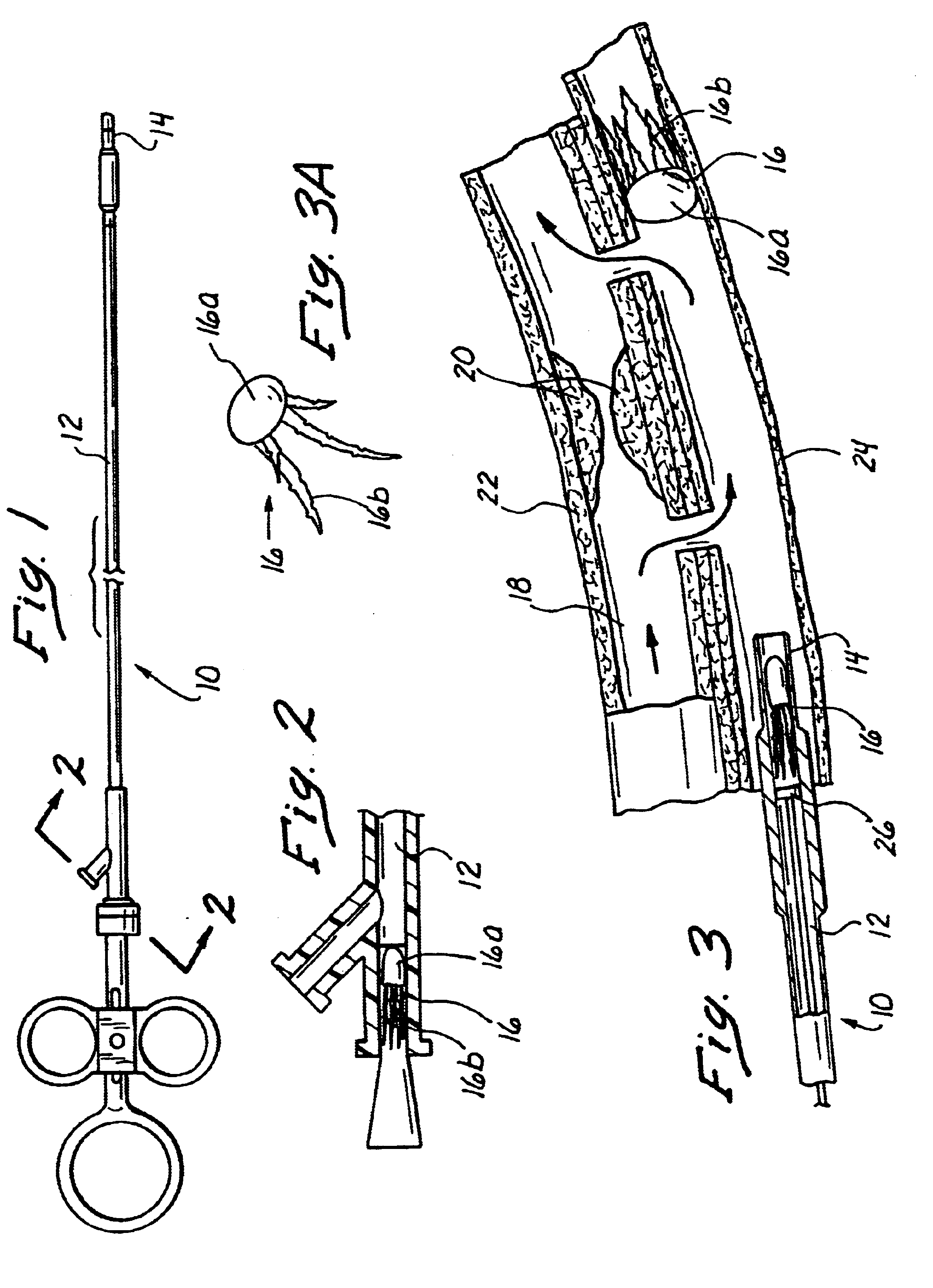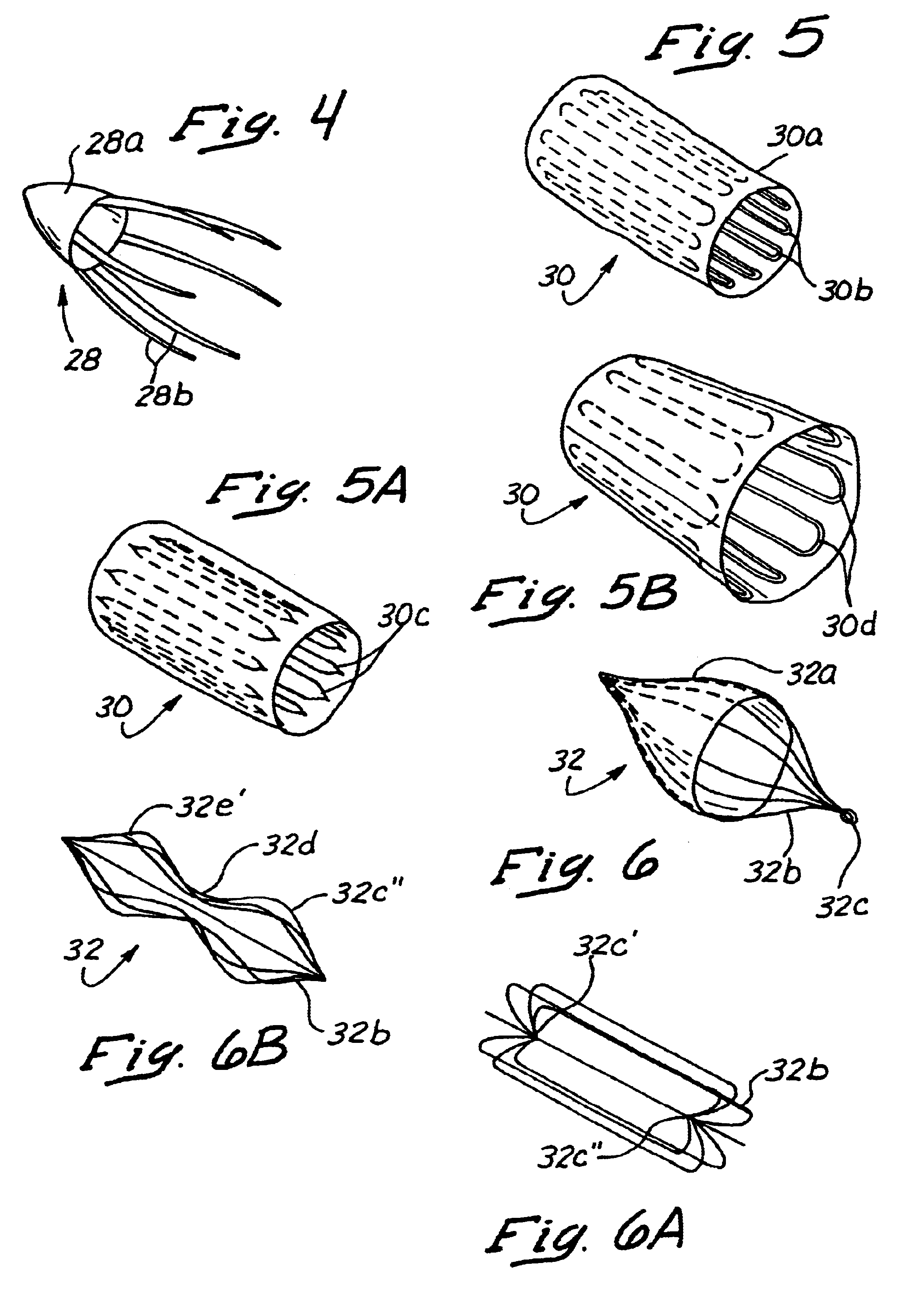Methods and apparatus for blocking flow through blood vessels
a technology of blood vessels and blocking devices, applied in the field of medical devices, can solve problems such as unaddressed problems, inappropriate deployment of embolization coils, and unresolved problems, and achieve the effect of preventing blood flow
- Summary
- Abstract
- Description
- Claims
- Application Information
AI Technical Summary
Benefits of technology
Problems solved by technology
Method used
Image
Examples
embodiment 64
Such embodiment, in addition to providing the desired vaso-occlusion, further provides the advantage of defining offshoot vessels 68 that may otherwise go undetected (i.e., difficult to visualize) due to the high blood flow rate passing through the main vessel to be occluded. As will be appreciated by those skilled in the art, such high blood flow rate has a tendency to wash out or otherwise prevent sufficient contrast media from building up to detectable concentrations in such offshoot vessels. Additionally, such embodiment 64 further advantageously allows for the infusion of embolization means while such catheter remains in place in the vessel, thus eliminating the need for additional devices and procedure in the event it is necessary to occlude such offshoot vessels.
embodiment 70
FIG. 20 depicts a three-valved stent 70 positionable within a vessel that, in addition to occluding blood flow, may be advantageously manipulated to redirect blood flow through a vessel as may be desired. In this respect, the stent 70, which may be deployed as all of the other aforementioned embodiments, namely, via expulsion through the lumen of a catheter of a desired location, is provided with three (3) valves 70a, 70b, 70c capable of occluding or facilitating blood flow. The respective valves 70a, 70b, 70c may be manipulated such that blood flow paths can be controlled at particular pressure differentials. Advantageously, such embodiment 70 may be customized to create one flow channel under one set of pressure conditions and a different flow path under different conditions.
Referring now to FIG. 21, there is shown yet a still further preferred way to achieve the desired site-specific vaso-occlusion via the deployment of a vaso-occlusive agent 72 through the distal end of the cath...
embodiment 120
Referring now to FIG. 30, there is yet another preferred embodiment according to the embolization method of the present invention. In this embodiment 120, a deployment catheter 10 having an inflatable balloon 128 formed just proximal the distal end thereof is advanced to a site within the vasculature to be occluded. The balloon 128 is inflated to a point sufficient to occlude blood flow, as well as fix the distal end 14 of the catheter in position to form an intraluminal closure within the vessel at the desired site. In this regard, once maintained in the desired position, via the balloon 128, a conductive substance 122, such as saline, for example, is ejected from the distal end of the lumen of the catheter 14. A current is then passed through the conductive substance via an insulated electrode 126 extending through the distal end of the catheter 14. A current is then passed through the conductive substance 122 and about the lumen of the vessel 130, thus causing the lumen 130 to de...
PUM
 Login to View More
Login to View More Abstract
Description
Claims
Application Information
 Login to View More
Login to View More - R&D
- Intellectual Property
- Life Sciences
- Materials
- Tech Scout
- Unparalleled Data Quality
- Higher Quality Content
- 60% Fewer Hallucinations
Browse by: Latest US Patents, China's latest patents, Technical Efficacy Thesaurus, Application Domain, Technology Topic, Popular Technical Reports.
© 2025 PatSnap. All rights reserved.Legal|Privacy policy|Modern Slavery Act Transparency Statement|Sitemap|About US| Contact US: help@patsnap.com



